Jean-Michel Othoniel and Johan Creten think big for their new Paris studio
Johan Creten's three-ton bronze bat, De Vleermuis, is being displayed at Petit Palais during FIAC art fair
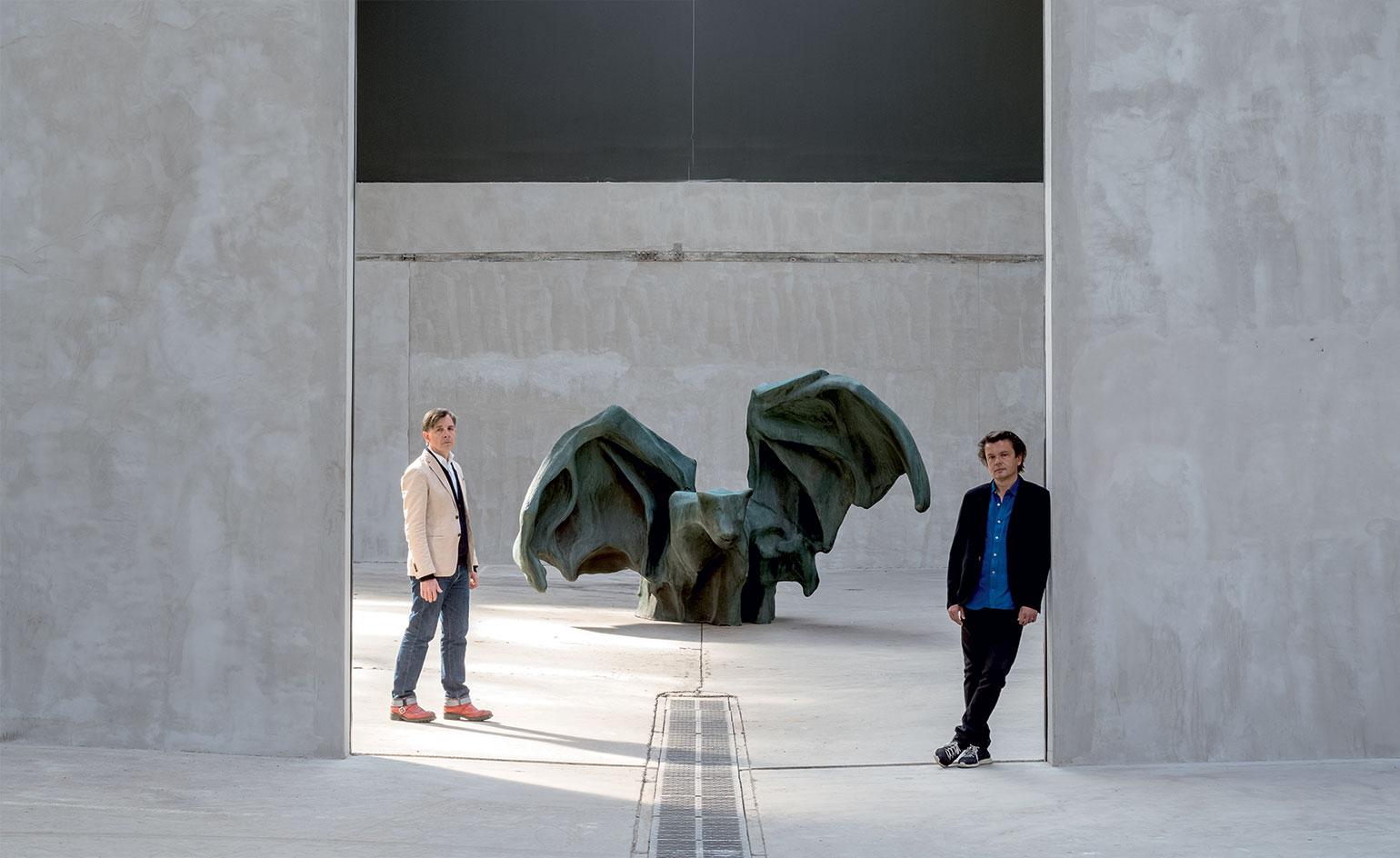
A couple of decades ago, this writer’s handbag ‘disappeared’ at the edge of Montreuil, a gritty eastern suburb of Paris once best known for its marché des voleurs, or thieves’ market. In recent years, however, artists have been flocking to Montreuil, drawn by its proximity to the capital and affordable real estate. It’s not yet Brooklyn, but change is in the air.
The latest big name to arrive is Jean-Michel Othoniel, who splashed onto the scene in 2000 with his colourfully beaded Palais Royal-Musée du Louvre metro entrance. He has since become one of the country’s foremost contemporary artists and a member of the Académie des Beaux-Arts, his poetic glass sculptures appearing everywhere from the Château de Versailles gardens to the National Museum of Qatar.
This autumn, Othoniel is moving into a vast space he will share with his life partner, the Belgian sculptor Johan Creten, who built his reputation using ceramics as a material for contemporary art when it was still considered passé. (Creten is showing a three-ton bronze bat, De Vleermuis, in front of the Petit Palais during the FIAC art fair.) Until now, Othoniel had three different studios in Paris, while Creten earned the nickname ‘clay gypsy’ after years of working in temporary studios around the world. Both were finding it increasingly problematic to store their monumental artworks.
Hoping to locate all their activity in one place, they searched for years in the Paris suburbs. And then, three years ago, Othoniel stumbled upon a space for sale, nearly 4,000 sq m and only one metro station beyond the Périphérique. Built as a metal workshop in the early 20th century, it was in excellent condition, with Eiffel-era architecture of metal beams and glass ceilings. ‘It’s a beautiful space, almost a postcard Paris atelier,’ says the soft-spoken Othoniel. ‘It’s very rare to find a place like this that hasn’t been destroyed by the years.’
The pair call their new studio La Solfatara, after a volcanic crater near Naples that has inspired artists for generations. The name references the re used for their sculptures in glass, ceramic and bronze, as well as Othoniel’s earliest works, which were made of sulphur from yellow stone. It will be a place ‘bubbling with energy, eruption, fusion – a dynamic place for collaboration,’ he says. Othoniel believes the new studio will encourage each of them to think about their work in a different way. Though La Solfatara will receive visits by appointment only, the duo want it to feel like a community, welcoming art-world figures and artists of all types for exchange and experimentation.
La Solfatara also offers them another place to exhibit their works, especially the largest pieces that are complicated to move. During FIAC week, they will show a mix of their recent creations to collectors and friends, such as Othoniel’s Agora steel brick igloo and Creten’s gigantic vulture, De Gier.
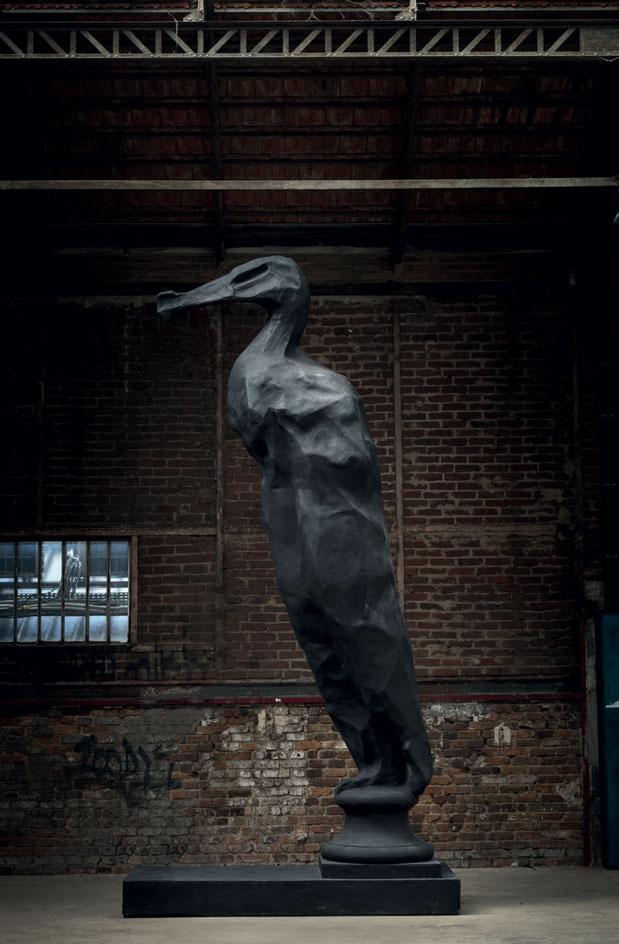
De Gier (The Vulture), 2015-2016, by Johan Creten
La Solfatara consists of two buildings side by side. The larger of the two, the Great Hall, covers roughly the length of a football eld. The smaller, the High Hall, is about three-quarters as long and nearly 15m-tall at its highest point. Each features a huge open area, too spacious to be heated, yet perfect for creating and installing large artworks (or throwing parties).
Receive our daily digest of inspiration, escapism and design stories from around the world direct to your inbox.
Determined to have a major say in the renovation, the artists called upon French architect Dominique Lyon, a friend, to help design the project. They agreed to leave the buildings’ bones basically untouched, while adding a few strong details. ‘We wanted to keep the spirit of the place,’ says Othoniel. ‘We worked with it in a utilitarian way, to make it practical for the artworks.’
One striking new addition to the High Hall is the entrance, a folding glass door 7m high and 5m wide. To one side, a bookstore is planned for a later stage. (Othoniel and Creten have both produced a number of books, considering them artworks in their own right, and this autumn Phaidon will release Othoniel’s first monograph in ten years.) Across from the store, a café will eventually occupy a space where an auto shop once stood, with a visiting artists’ residence above.
In the open space of the High Hall, the artists have placed a low platform on the floor as a theatrical way to exhibit installations. Othoniel covered the upper parts of the walls with charred wood, a Japanese process known as shou sugi ban, which he fell in love with years ago after seeing it on the island of Naoshima. ‘Burnt wood with its subtle odour fits in well with the idea of La Solfatara,’ he notes. Stuck to the back of the High Hall is a delightfully random structure, an actual three- storey townhouse peeking into the space from one corner. Built in 1869 to manufacture alcohol for fuel, it will now house the staff offices, as well as Othoniel’s personal office, which comes with a view of the studio.
Next to the old house, the artists have restored a 1941 ‘glass house’ by architect Maurice Cammas, installing an interior façade with large windows. Its three floors will contain a metal shop, photography studio, spaces for collaborators, a conference room and archives. Creten says the importance of archives is ‘something we learned from American artists, many in their fifties like us, who start thinking about how to organise their work for art historians or young artists to study’. An open-air terrace overlooks Montreuil’s mishmash of industrial buildings and residences; Othoniel plans to create a major sculpture there, as a landmark for La Solfatara.
No glass will be blown at the studio (Othoniel relies on specialists in Switzerland, Italy and India), but he and his team will use the space to string together large glass orbs or metal beads into fountains and oversized necklaces. They will stack and weld bricks of glass or polished steel into waves and walls, and run computer simulations to test how these large sculptures will stand up over time. Othoniel will continue to work in other media here, too, such as his ink and gold leaf paintings currently on display at the Louvre Museum.
La Solfatara’s Great Hall is where Creten has set up his new studio, 500 sq m at the rear of the building. Settling down in one place will be an adjustment after his nomadic lifestyle, but he is taking inspiration from Auguste Rodin’s former atelier in the southwestern suburb of Meudon, a hive of activity where close to 50 people once worked. Tourists still travel to Meudon to see Rodin’s studio – perhaps a century from now, La Solfatara will draw them east to Montreuil. §
As originally featured in the November 2019 issue of Wallpaper* (W*248) – on newsstands now

In the High Hall, from left, Othoniel’s Invisibility Face sculptures, 2015; Gold Lotus and Rivère Bleue, 2019; Black Lotus, 2018; Noeud Sauvage, 2018; and Rose Du Louve Paintings, 2019
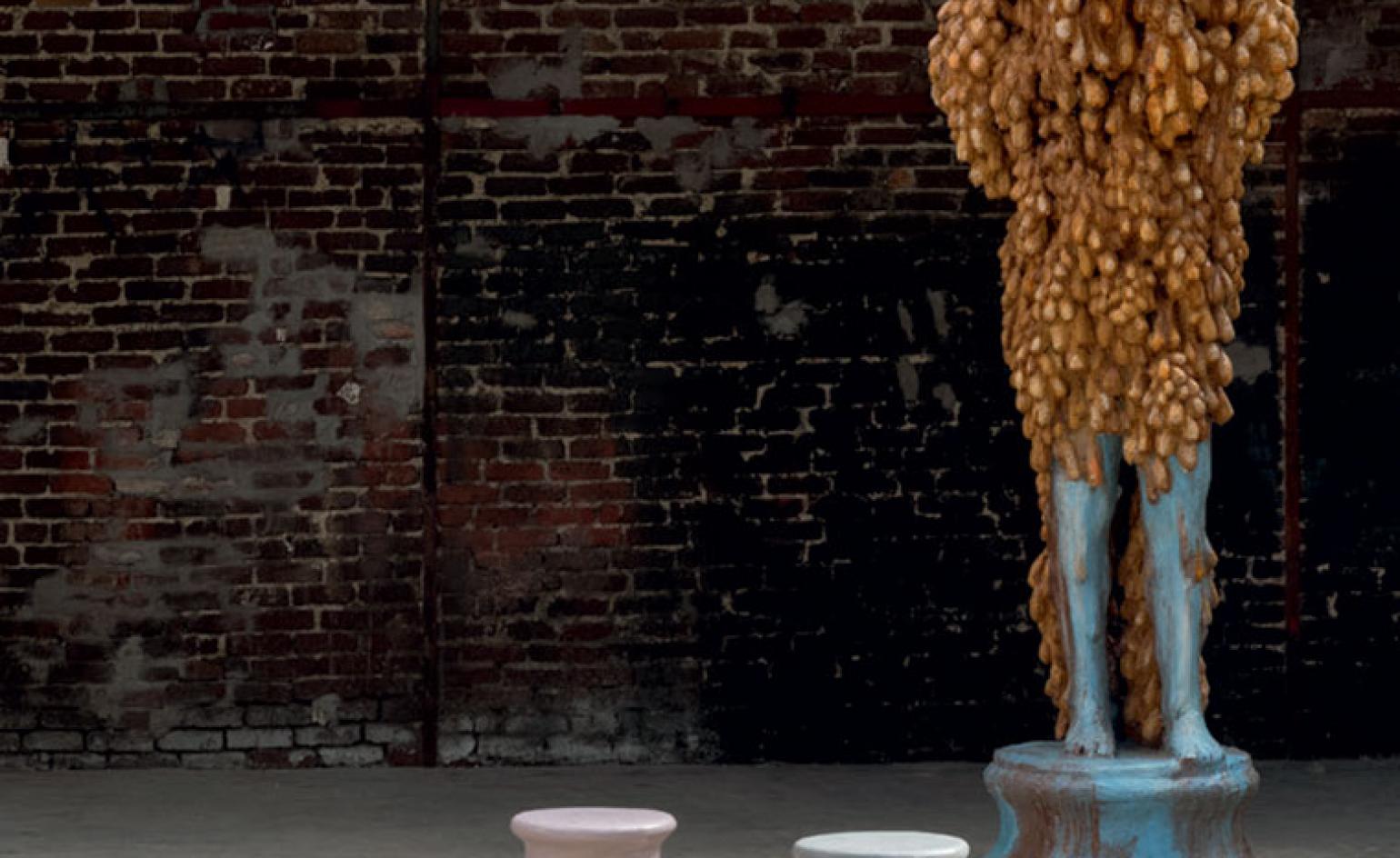
Why Does Strange Fruit Always Look So Sweet?, 1998-2015; and a series of Points D’Observations, 2016-1018, all by Johan Creten
INFORMATION
Amy Serafin, Wallpaper’s Paris editor, has 20 years of experience as a journalist and editor in print, online, television, and radio. She is editor in chief of Impact Journalism Day, and Solutions & Co, and former editor in chief of Where Paris. She has covered culture and the arts for The New York Times and National Public Radio, business and technology for Fortune and SmartPlanet, art, architecture and design for Wallpaper*, food and fashion for the Associated Press, and has also written about humanitarian issues for international organisations.
-
 The White House faced the wrecking ball. Are these federal buildings next?
The White House faced the wrecking ball. Are these federal buildings next?Architects and preservationists weigh in on five buildings to watch in 2026, from brutalist icons to the 'Sistine Chapel' of New Deal art
-
 Georgia Kemball's jewellery has Dover Street Market's stamp of approval: discover it here
Georgia Kemball's jewellery has Dover Street Market's stamp of approval: discover it hereSelf-taught jeweller Georgia Kemball is inspired by fairytales for her whimsical jewellery
-
 The best way to see Mount Fuji? Book a stay here
The best way to see Mount Fuji? Book a stay hereAt the western foothills of Mount Fuji, Gora Kadan’s second property translates imperial heritage into a deeply immersive, design-led retreat
-
 Inez & Vinoodh unveil romantic new photography series in Paris
Inez & Vinoodh unveil romantic new photography series in ParisA series of portraits of couple Charles Matadin and Natalie Brumley, created using an iPhone in Marfa, Texas, goes on show in Paris
-
 Inside Davé, Polaroids from a little-known Paris hotspot where the A-list played
Inside Davé, Polaroids from a little-known Paris hotspot where the A-list playedChinese restaurant Davé drew in A-list celebrities for three decades. What happened behind closed doors? A new book of Polaroids looks back
-
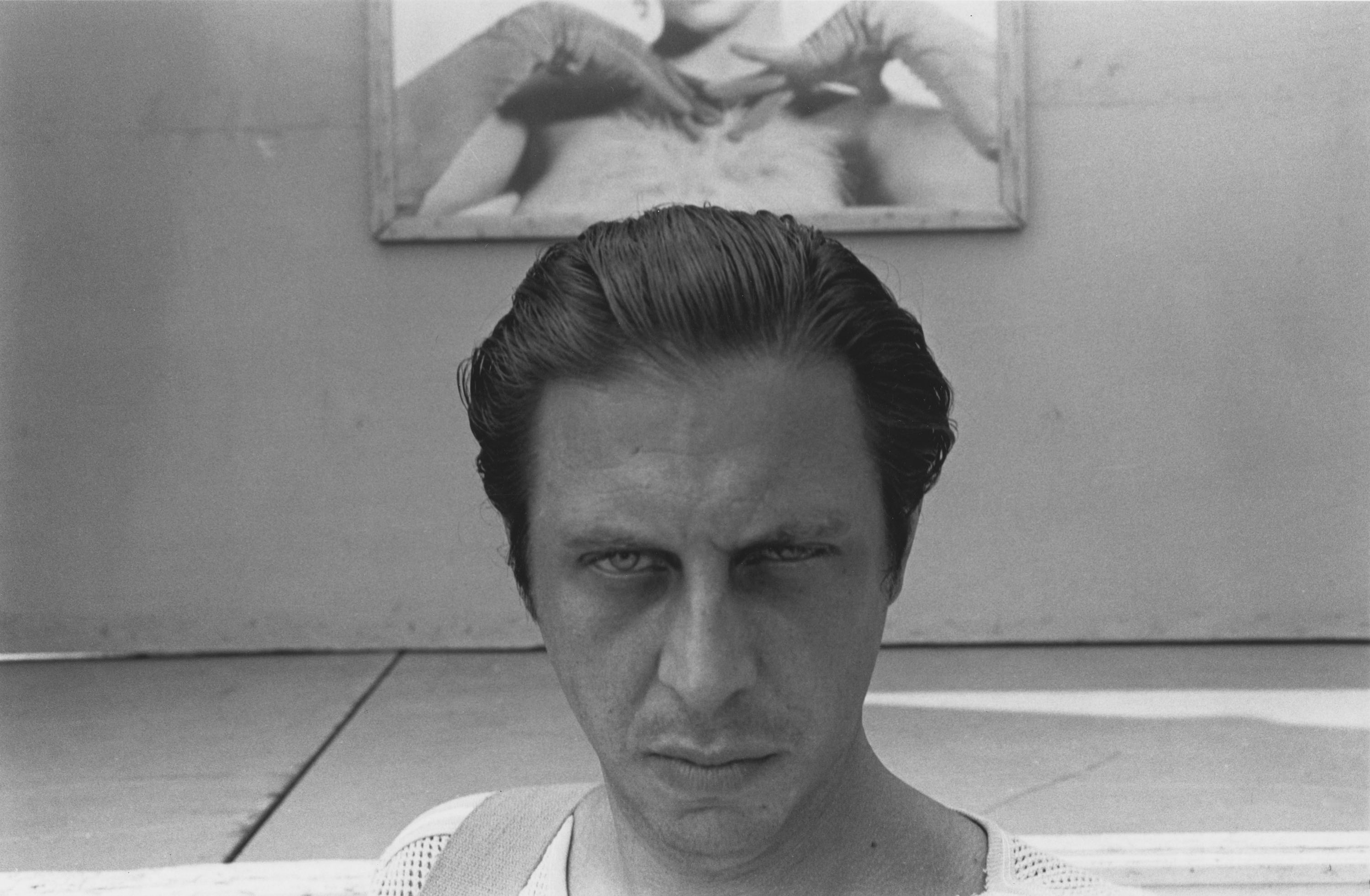 All eyes on Paris Photo 2025 – focus on our highlights
All eyes on Paris Photo 2025 – focus on our highlightsThe world's most important international photography fair brings together iconic and emerging names, galleries large and small – and there’s much to covet
-
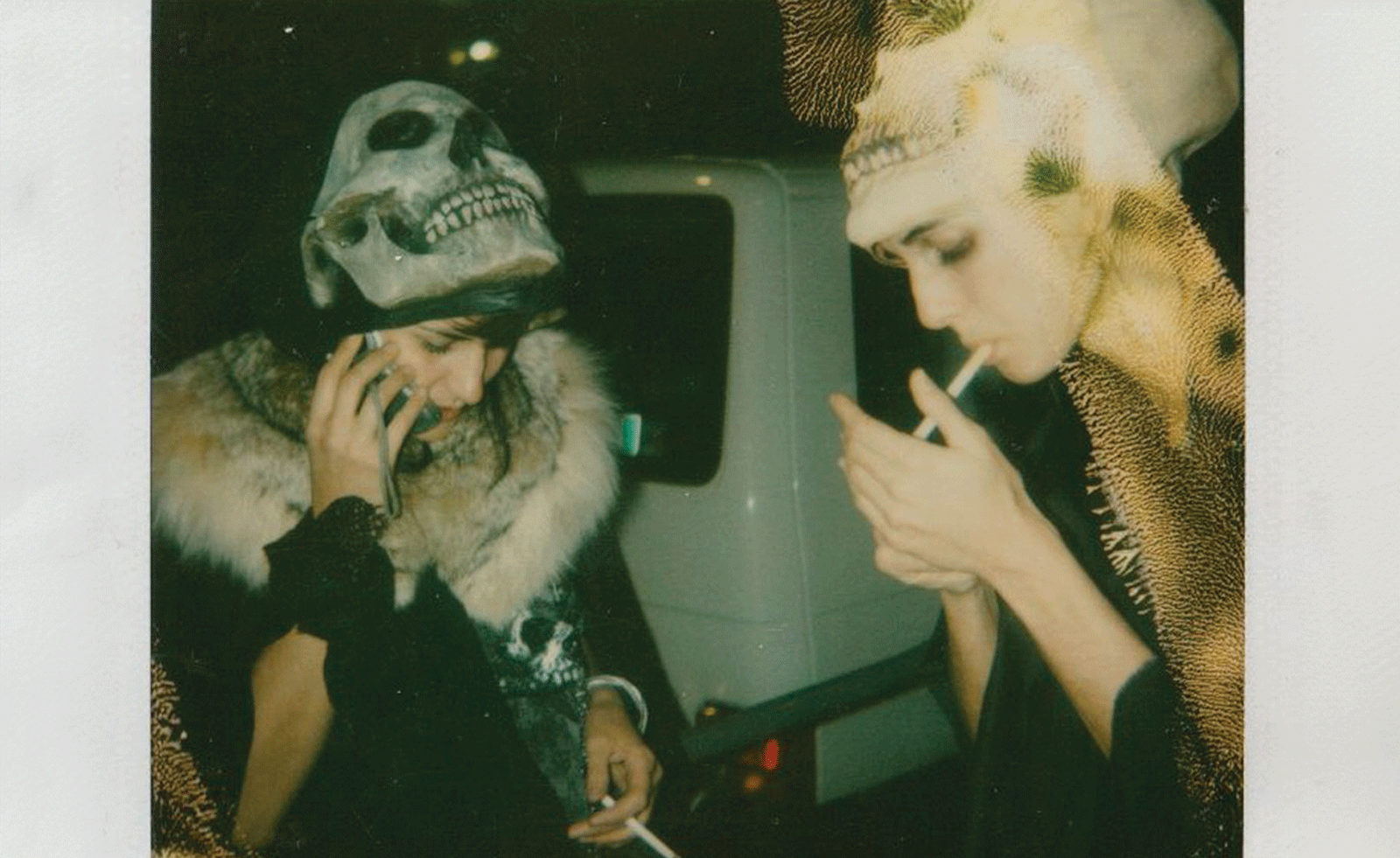 Ten things to see and do at Art Basel Paris 2025
Ten things to see and do at Art Basel Paris 2025Art Basel Paris takes over the city from 24-26 October. Here are the highlights, from Elmgreen & Dragset to Barbara Kruger and Dash Snow
-
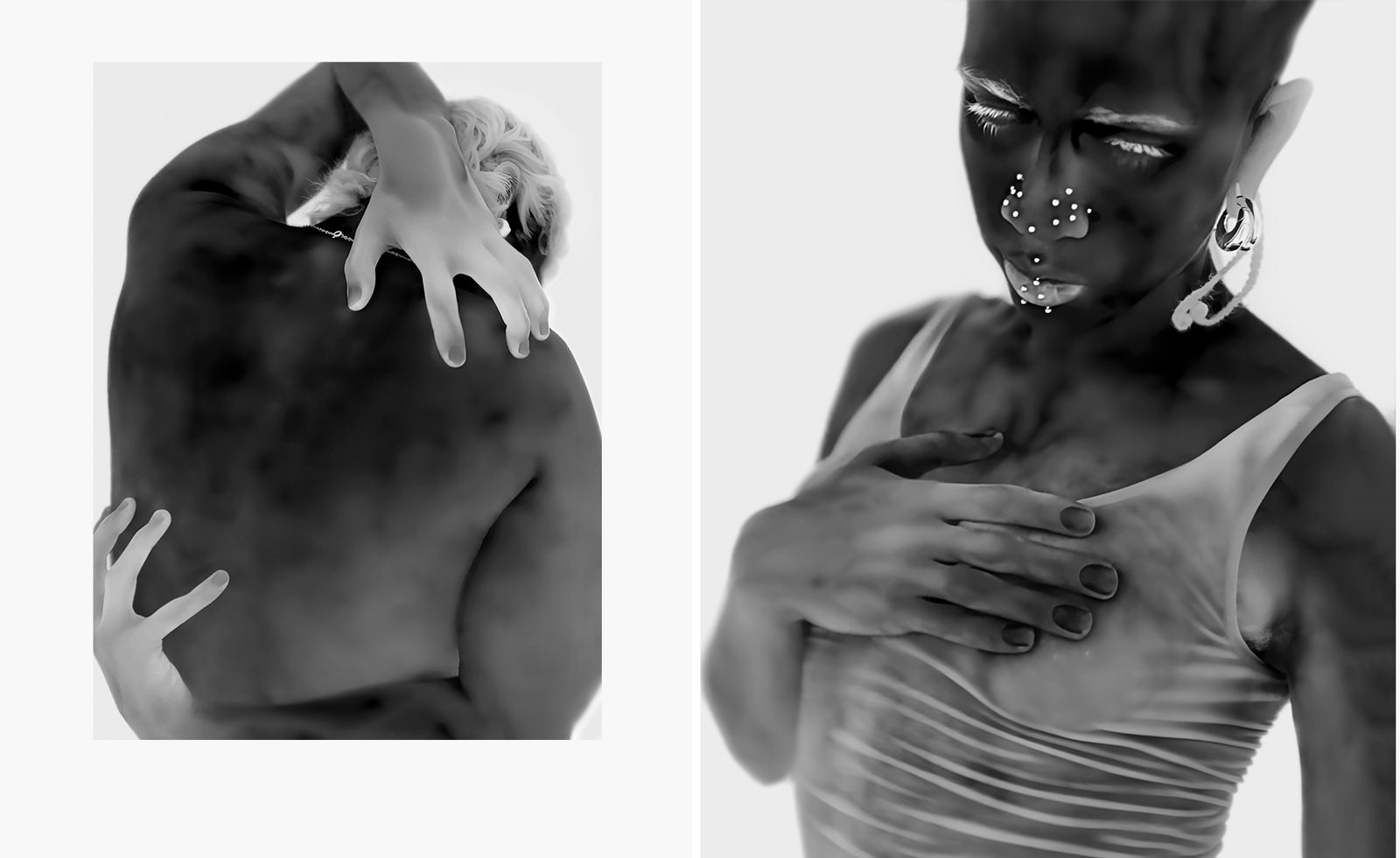 Yulia Mahr digs beneath the skin in her modern update of classic Greek statues in Paris
Yulia Mahr digs beneath the skin in her modern update of classic Greek statues in ParisIn 'The Church of Our Becoming', on view at the Courtyard at Dover Street Market Paris, Yulia Mahr celebrates real human bodies
-
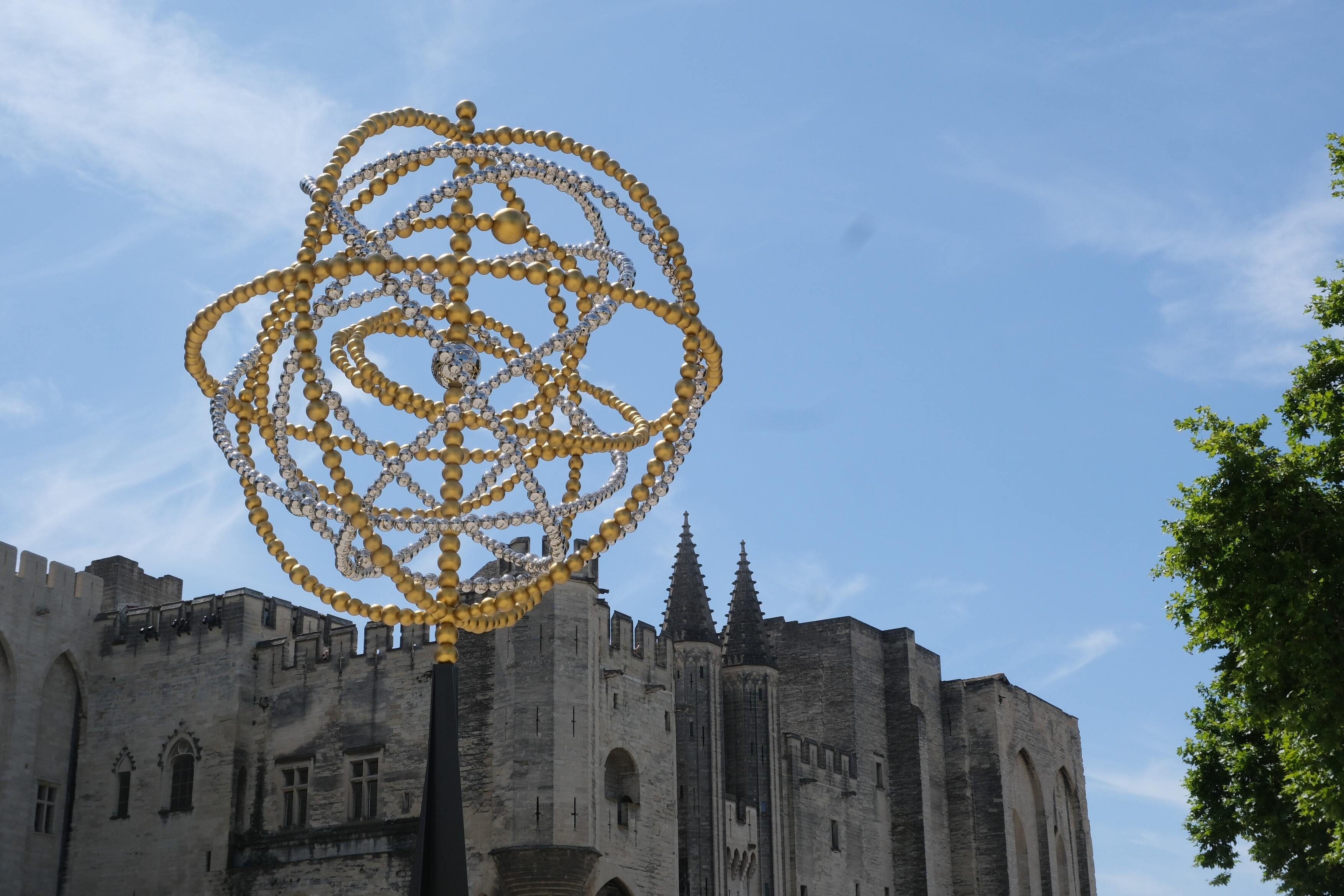 Jean-Michel Othoniel takes over Avignon for his biggest ever exhibition
Jean-Michel Othoniel takes over Avignon for his biggest ever exhibitionOriginally approached by Avignon to mark their 25th anniversary as the European Capital of Culture, Jean-Michel Othoniel more than rose to the challenge, installing 270 artworks around the city
-
 Rolf Sachs’ largest exhibition to date, ‘Be-rühren’, is a playful study of touch
Rolf Sachs’ largest exhibition to date, ‘Be-rühren’, is a playful study of touchA collection of over 150 of Rolf Sachs’ works speaks to his preoccupation with transforming everyday objects to create art that is sensory – both emotionally and physically
-
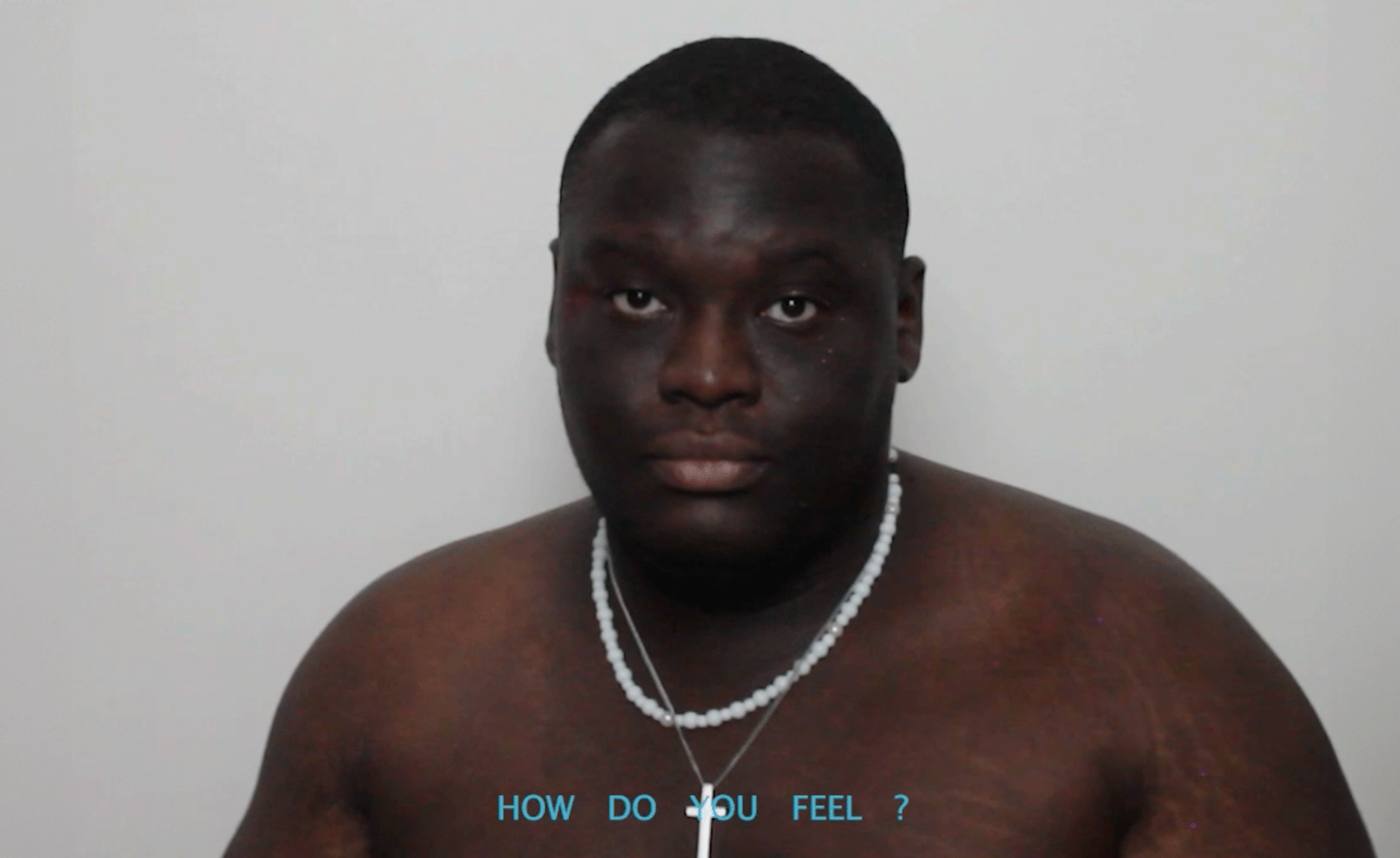 Joel Quayson’s winning work for Dior Beauty at Arles considers the theme ‘Face-to-Face’ – watch it here
Joel Quayson’s winning work for Dior Beauty at Arles considers the theme ‘Face-to-Face’ – watch it hereQuayson, who has won the 2025 Dior Photography and Visual Arts Award for Young Talents at Arles, imbues his winning work with a raw intimacy